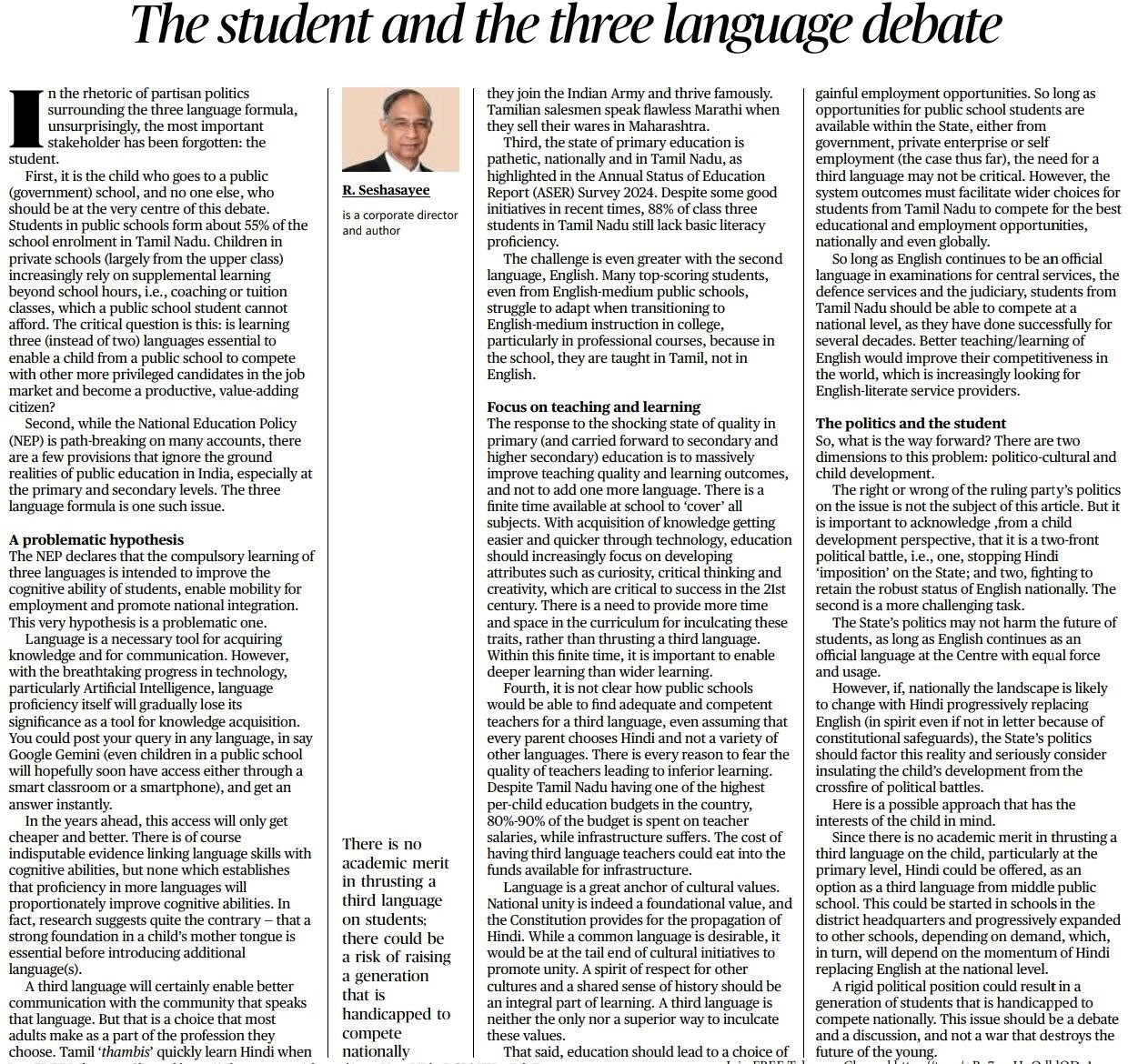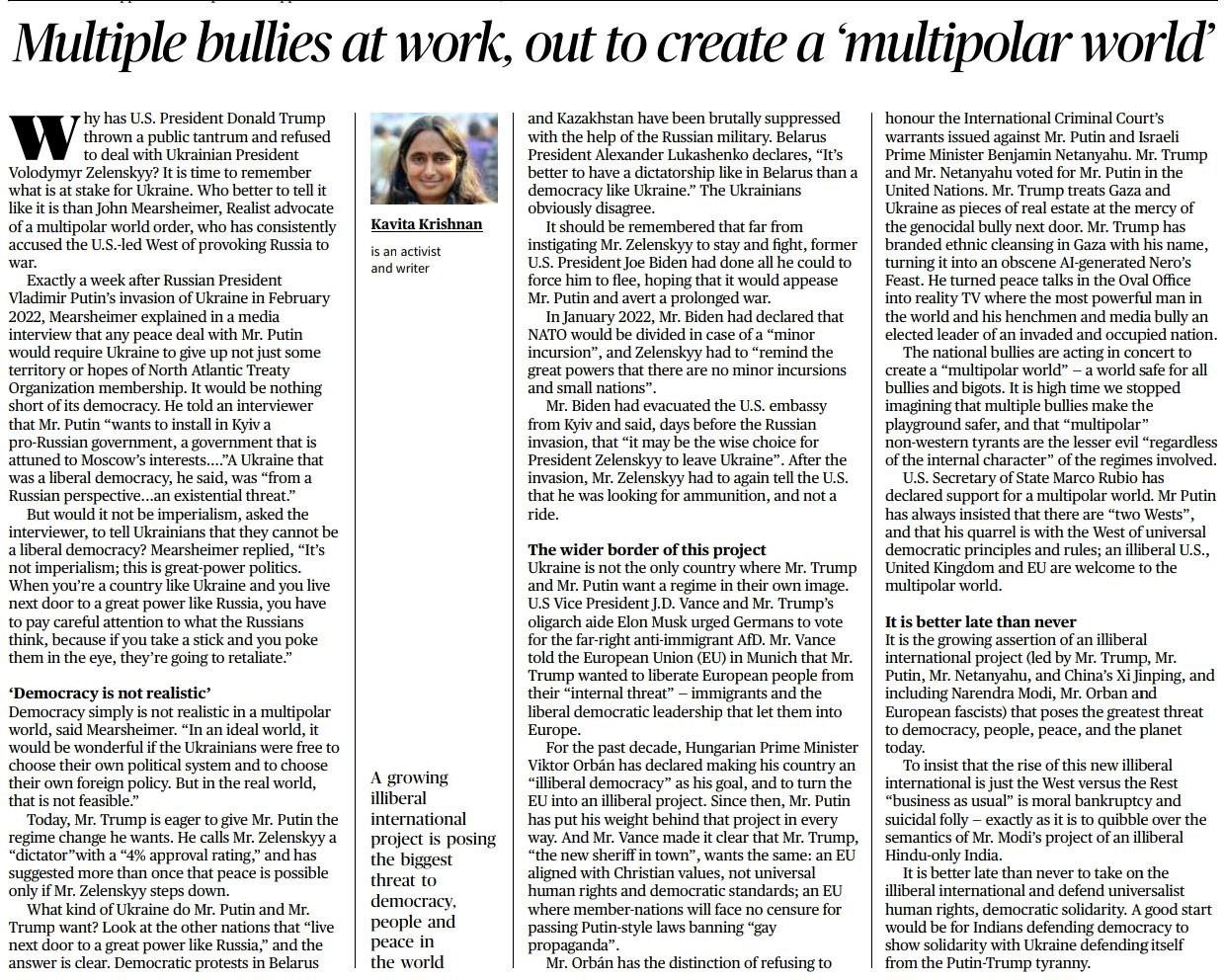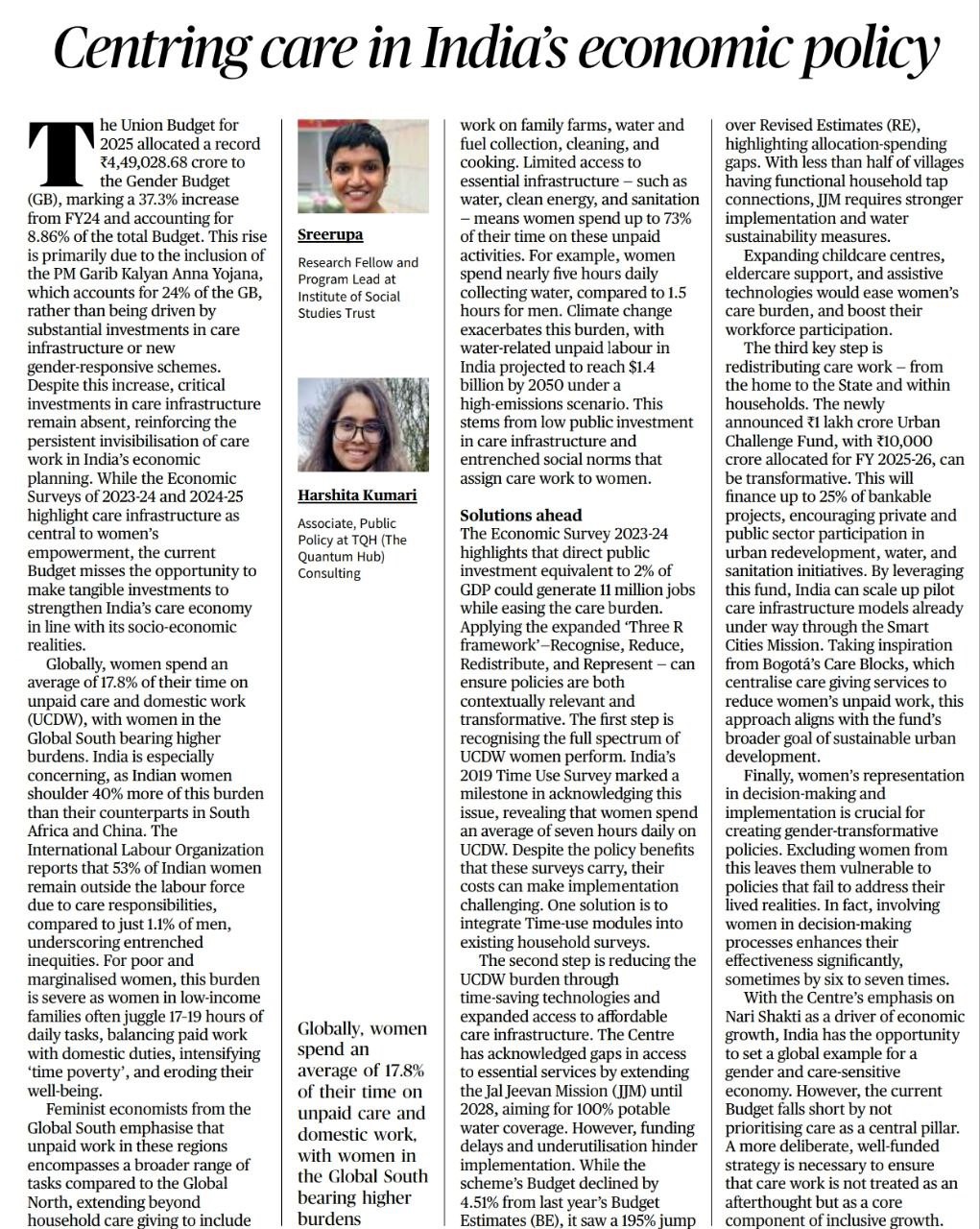1. The Three-Language Debate and Its Impact on Students
Introduction
The three-language formula has been a contentious issue in Indian education policy, particularly in Tamil Nadu. The debate centers around whether learning a third language—primarily Hindi—benefits students in public schools or places an undue burden on them. The National Education Policy (NEP) promotes multilingual education to enhance cognitive skills, employment opportunities, and national integration. However, there are concerns about its feasibility, practicality, and necessity in a rapidly changing educational and technological landscape.
- The Core Issue: Public School Students at a Disadvantage
- Public school students, comprising 55% of Tamil Nadu’s student population, often lack access to private coaching or supplemental learning, unlike their private school counterparts.
- The fundamental question is whether adding a third language improves their competitiveness in higher education and employment or merely increases academic pressure.
- Problems with the Three-Language Formula
- The NEP suggests that multilingual learning enhances cognitive ability, employment mobility, and national integration. However, this assumption is debated.
- In an era of artificial intelligence and translation technologies, linguistic skills are gradually losing their traditional role in knowledge acquisition.
- While learning an additional language can improve communication skills, there is little evidence proving its direct correlation with employment success.
- Challenges in Tamil Nadu’s Education System
- Primary Education Gaps:
- According to the Annual Status of Education Report (ASER) 2024, 85% of Class 3 students in Tamil Nadu still struggle with basic literacy.
- Before adding new languages, the focus should be on strengthening foundational learning.
- Struggles with English Proficiency:
- Even top students from English-medium public schools struggle in higher education and professional courses where English is the medium of instruction.
- The gap in English literacy further weakens students’ ability to compete nationally and internationally.
- Rethinking Language Education: A More Practical Approach
- Focus on Teaching and Learning Quality:
- Rather than imposing a third language, policymakers should prioritize improving teaching methods and learning outcomes in existing subjects.
- Education should emphasize critical thinking, creativity, and curiosity—skills essential for the 21st century.
- Feasibility of Implementing a Third Language:
- Finding competent teachers for a third language is a challenge, especially in rural schools where even Hindi teachers are scarce.
- Additional time spent on learning a third language could take away from critical subjects like science, math, and computer literacy.
- Political vs. Student-Centric Approach
- The debate over language is often politically motivated, with language policies serving state and national interests rather than student welfare.
- Tamil Nadu has historically opposed Hindi imposition due to cultural and linguistic identity concerns.
- A rigid policy could disadvantage students, particularly those in public schools who already face systemic educational challenges.
Conclusion
The three-language policy needs to be reconsidered from the perspective of student welfare rather than political ideology. Enhancing foundational education, improving English proficiency, and equipping students with future-ready skills should take precedence over adding another language. A balanced approach, with an emphasis on skill-based learning, will ensure that students—especially from public schools—are not left behind in a competitive world.
Bottom of FormMains Practice Question |
Q. Critically analyze the three-language formula in India’s education system. How does it impact students, particularly those in public schools? Suggest alternatives for an inclusive and effective language policy. |
2. Geopolitical Power Struggles and the Rise of a Multipolar World
Introduction
The current global geopolitical landscape is witnessing an intense power struggle between democratic and authoritarian forces. The Russian invasion of Ukraine, the rise of illiberal internationalism, and the efforts to create a multipolar world order challenge the dominance of Western democratic principles. The actions of world leaders like Vladimir Putin, Donald Trump, Benjamin Netanyahu, and Viktor Orbán reflect an attempt to reshape global power structures to favor autocratic governance over democratic values.
- The Russia-Ukraine Conflict and Its Global Implications
- Russia’s invasion of Ukraine in 2022 was framed by Realist theorists as a reaction to Western provocation.
- Russian President Vladimir Putin sees a democratic Ukraine as an existential threat due to its alignment with the West and potential NATO membership.
- The invasion has sparked debates on whether the West provoked Russia or whether Moscow is pursuing expansionist ambitions.
- The war in Ukraine is a key battleground in the broader contest between authoritarianism and democracy.
- The Rise of a Multipolar World Order
- The idea of a “multipolar world” is being promoted by leaders who seek to weaken Western hegemony.
- The push for multipolarity often translates into a world where autocratic regimes collaborate to suppress democratic movements.
- Examples include:
- Suppression of protests in Belarus and Kazakhstan with Russian support.
- Hungarian Prime Minister Viktor Orbán’s efforts to shift Europe towards an illiberal axis.
- The alignment of figures like Trump, Putin, Netanyahu, and Xi Jinping in challenging Western democratic norms.
- The Role of Western Democracies and the U.S.
- The Biden administration supported Ukraine but initially tried to convince President Volodymyr Zelenskyy to negotiate, hoping to avoid a prolonged war.
- Trump, on the other hand, has taken a pro-Russian stance, labeling Zelenskyy a “dictator” and advocating for a settlement favorable to Russia.
- Trump’s allies in Europe, such as far-right German and Hungarian leaders, are pushing for a version of the European Union that aligns with nationalist and anti-immigrant policies.
- The Threat to Global Democracy and Human Rights
- The shift towards authoritarianism threatens democracy, peace, and human rights worldwide.
- The failure to support democratic nations like Ukraine against authoritarian aggression sets a dangerous precedent.
- If the multipolar world is built on suppressing opposition and violating human rights, it risks creating a more unstable and oppressive global order.
Conclusion
The concept of a multipolar world is being exploited by authoritarian leaders to justify actions that undermine democracy and human rights. While global power should be more equitably distributed, it must not come at the cost of democratic principles. Supporting Ukraine and resisting authoritarian expansion is crucial to maintaining a rules-based international order that prioritizes freedom, human rights, and peace.
Mains Practice Question |
Q. Critically analyze the concept of a multipolar world order. How does the current geopolitical struggle between democratic and authoritarian regimes shape international relations? |
3. Prioritizing Care Work in India’s Economic Policy
Introduction
The Union Budget 2025 allocated a record ₹4,49,028.68 crore to the Gender Budget (GB), marking a significant increase from previous years. However, this rise is largely due to welfare schemes like the PM Garib Kalyan Anna Yojana rather than targeted investments in care infrastructure. Care work—both unpaid and paid—remains a critical yet neglected component of India’s economic planning, disproportionately affecting women’s participation in the workforce. Addressing care infrastructure is essential for gender equity and economic growth.
- The Burden of Unpaid Care Work on Women
- Women globally spend an average of 17.8% of their time on unpaid care and domestic work, with those in the Global South, including India, carrying a higher burden.
- In India, women shoulder 40% more unpaid care responsibilities than their counterparts in China and South Africa.
- The International Labour Organization (ILO) reports that 53% of Indian women are excluded from the labor force due to care responsibilities, compared to just 1.1% of men.
- Poor and marginalized women bear the heaviest burden, balancing 17-19 hours of unpaid work with paid labor, leading to ‘time poverty’ and reduced well-being.
- Challenges in Care Infrastructure
- Lack of investment in essential services such as water, clean energy, and sanitation forces women to spend up to 73% of their time on unpaid tasks like collecting water, cooking, and household chores.
- Limited access to child and elderly care, along with inadequate healthcare infrastructure, places additional pressure on women.
- Climate change further exacerbates these burdens, with water-related unpaid labor in India projected to reach $1.4 billion by 2050 under a high-emissions scenario.
- Policy Gaps and the Need for Reform
- The Gender Budget increase has not translated into improved care infrastructure but is largely attributed to welfare schemes.
- Programs like the Jal Jeevan Mission (JJM) aim to improve water access, but implementation challenges persist, with less than half of villages having functional household tap connections.
- The government’s Urban Challenge Fund, with an allocation of ₹10,000 crore, offers an opportunity to integrate care infrastructure into urban planning.
- Expanding childcare centers, home support, and assistive technologies can significantly ease women’s burden and boost workforce participation.
- Solutions for a Gender-Responsive Economic Policy
- Recognition of Care Work:
- Conducting time-use surveys to measure unpaid care work and integrating the findings into policy planning.
- Encouraging policies that recognize the economic value of care work.
- Reducing Care Burden Through Infrastructure:
- Investing in public transport, childcare facilities, elderly care, and healthcare to reduce women’s unpaid labor.
- Enhancing access to water, clean energy, and sanitation services.
- Redistributing Responsibilities:
- Encouraging men’s participation in domestic work through behavioral change campaigns.
- Supporting workplace policies like paid parental leave and flexible working hours.
- Women’s Participation in Policy-Making:
- Ensuring women’s involvement in decision-making, which has been shown to improve policy effectiveness significantly.
Conclusion
Despite increased gender budget allocations, care work remains undervalued in India’s economic policies. A shift towards gender-transformative planning, with targeted investments in care infrastructure, is essential for achieving economic growth and gender equality. Recognizing, reducing, and redistributing care responsibilities can enhance women’s workforce participation and overall well-being. India has the opportunity to lead as an example of a gender-sensitive economy, but this requires prioritizing care work as a central pillar of development.
Mains Practice Question |
Q. How does unpaid care work impact women’s workforce participation in India? Critically analyze the role of economic policies in addressing the issue and suggest measures for a gender-responsive approach. |




